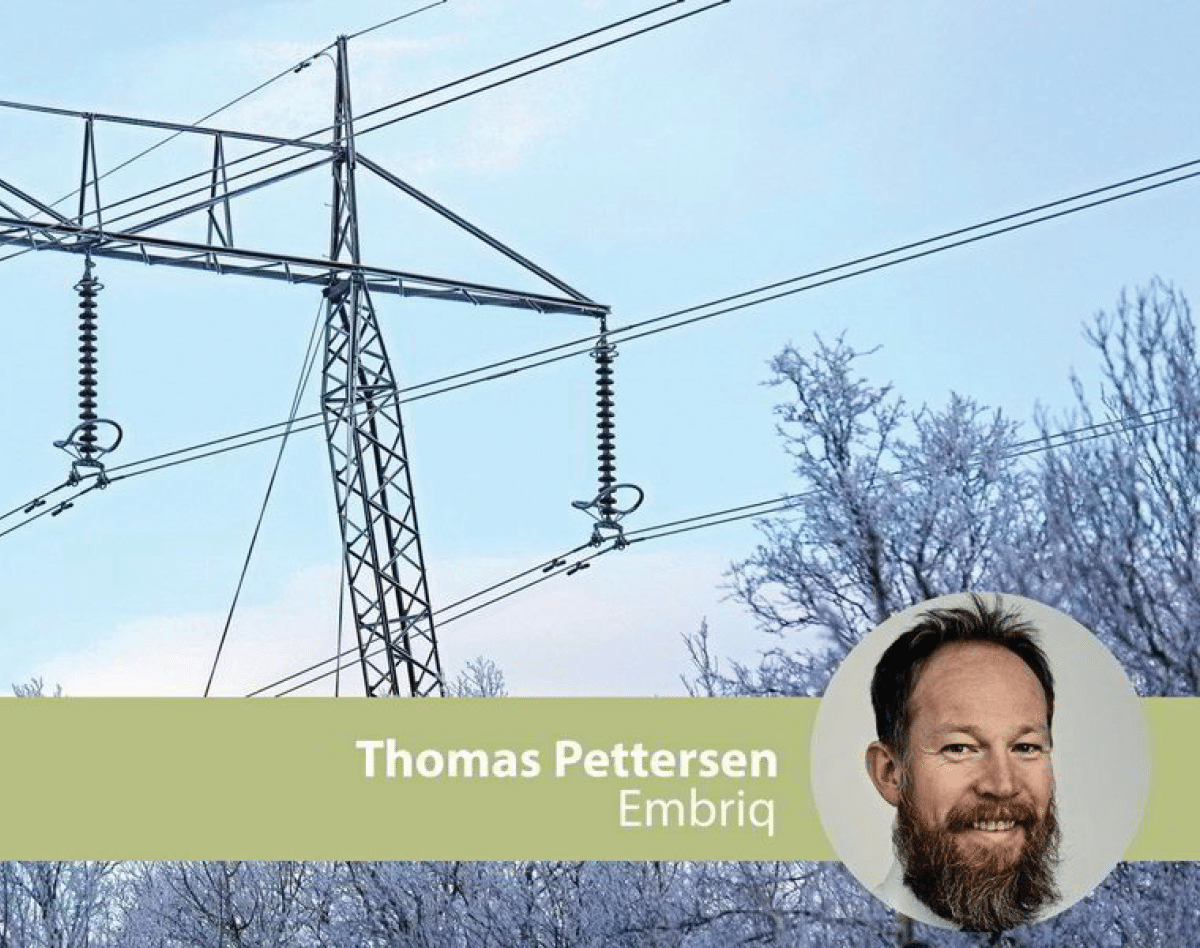By Thomas Pettersen, CEO at Embriq
The grid companies have to turn down companies that want to electrify. Norwegian industry is taking climate targets seriously, and has prepared for the transition to green energy through electrification. Strategies have been developed, projects have been carried out, and the plan for implementation is ready. All that’s left is to secure the energy they need. Businesses have to join a long application queue to be allocated the energy they need. And unfortunately, much of Norway’s power grid is already full. Disappointment is great for those who have their applications rejected. And it’s even greater for those who are next in line.
The number of businesses that have applied for energy has been greater than expected, and it will only increase in the years to come. Norway is in trouble, and the overall energy surplus has been given a warning shot.
Minister of Petroleum and Energy Terje Asland says that it is dramatic and that it may mean we will fail to reach the climate targets. The reason is that we will be unable to adapt society at the desired pace.
The fact that industry is unable to implement planned restructuring on time is dramatic. But there is little doubt that this will also have consequences for NEW industry.
It seems that everyone agrees that the grid must be expanded – in addition to energy production. And construction needs to happen very quickly, but it is unlikely that this is possible in order to meet future demand. The projects planned now will not be realised until 5 to 10 years from now. At the earliest. Therefore, more emphasis must be on finding other solutions that enable us to utilise the existing power grid in a more efficient way. Here are a few claims:
1. There IS available energy in the grid
The industry calls it stranded energy. It’s not as if all this energy can’t be used without erecting new huge pylons on pristine nature. The energy needs to be made available to those who need it, and wherever it is possible to send it. To achieve this, grid companies must improve their insight into the state of the grid.
Digital solutions are needed that can indicate at all times where energy is available and where it is possible to lead it. Real-time insight into where there is available capacity and where it is possible to direct this energy will provide better energy flow and utilisation of the infrastructure that already exists.
2. We need to share the available energy in a better way
Many businesses have the opportunity to “give away” energy for a few hours here and there. This can be allocated to other businesses who benefit more from it. Businesses apply for energy (on special terms) and secure access to energy based on manual calculations, and they want to be on the safe side. Continuous balancing between supply and demand will result in better utilisation of the existing grid.
But who wants to simply give away a need for energy that has been secured? It’s obvious that one wants to contribute to the environment, but it would probably create even greater incentives by establishing a new market for buying and selling energy.
Statnett has established a market for regulating energy (RKM). This is used to regulate the energy system so that there is always a balance between consumption and production in the power grid. Here, only (larger) players with an existing balance agreement can participate. One possible solution is to establish a marketplace for smaller players, which is easy to participate in for smaller energy consumers.
3. The physical grid DOES HAVE more capacity
Currently, the grid operates under risk rules. When we say that the grid is full, this includes a risk margin. If you allow the grid to operate with higher risk, greater capacity will be available. The increased risk can be mitigated through increased insight into the state of the grid in real time and will provide better utilisation of the existing grid. The grid companies know that it’s possible to increase the risk, however, legislation stands in the way. Furthermore, it must be the case that risk can be controlled, and this is achieved through better insight into the current state.
Yes, the grid needs to be expanded. This has to be done more efficiently and very quickly. But in order to transform society to renewable energy as quickly as possible, we also need to use the grid we already have more efficiently. The few examples above can all be solved with technology. The technology exists and can be implemented quickly.
While we are building new pylons and cables as fast as we can, we must therefore implement new digital solutions as fast as we can at the same time. Governing bodies must provide updated guidelines, standards and orders if necessary. Norwegian grid companies have already taken their own initiatives to exchange data between themselves. The authorities must also give the grid companies greater scope to employ new technology. In practical terms, implementing new technology is much faster than building a new grid. But this assumes that it doesn’t take forever to establish good framework conditions for the industry.
In the short term, the contribution from technology could make a great difference in whether we achieve our climate targets or not.
This chronicle was published on Europower’s website on 23.11.23.
You can read the article on Europower here.
Thomas Pettersen
CEO
Embriq AS



